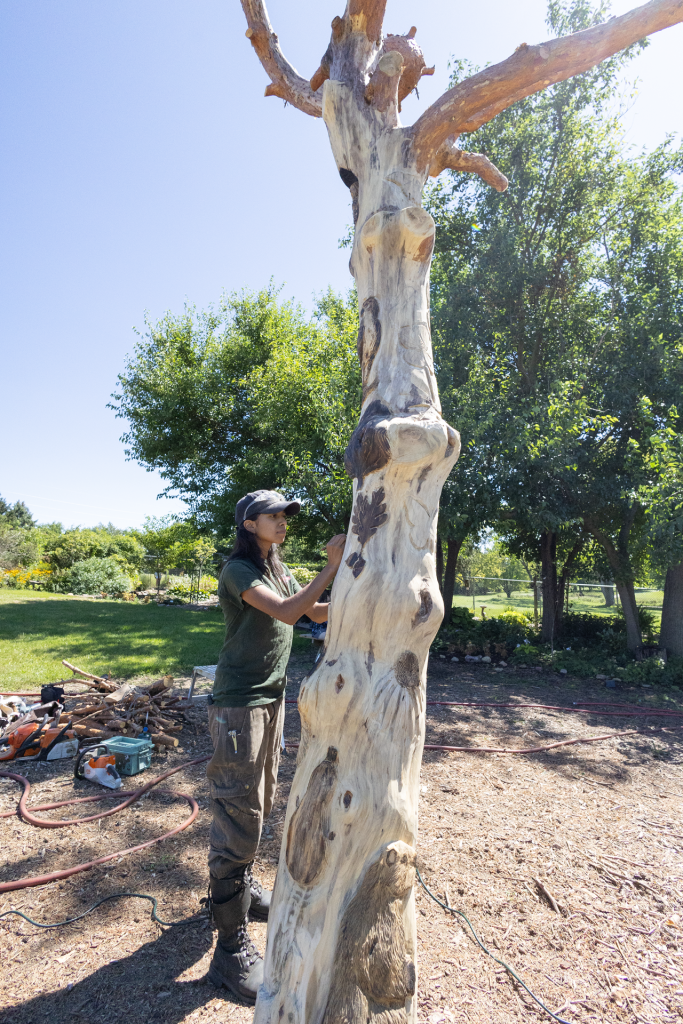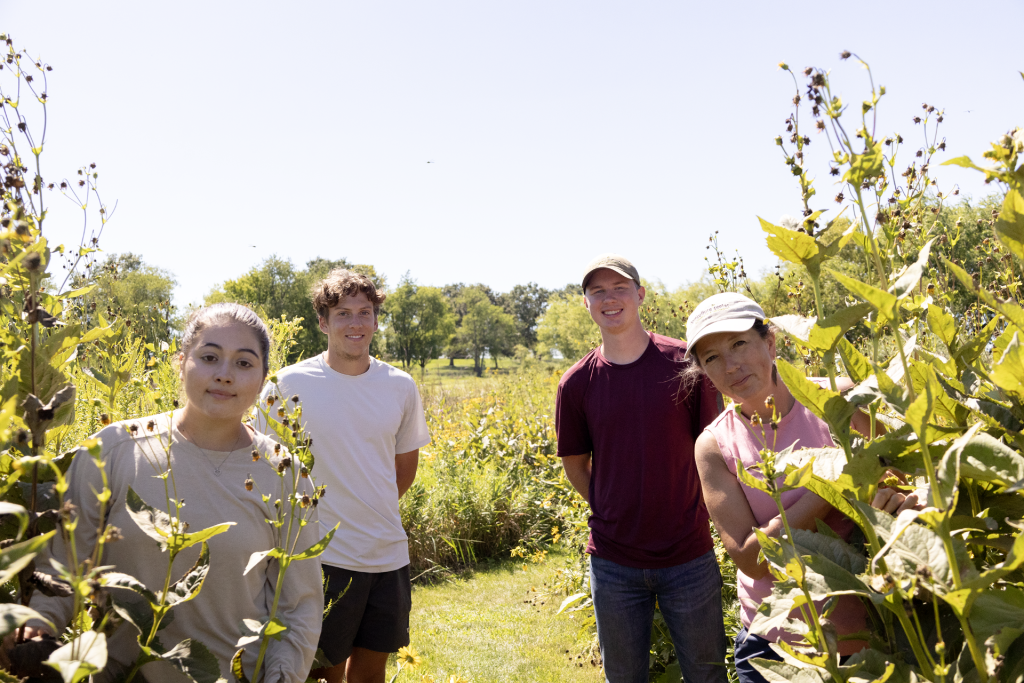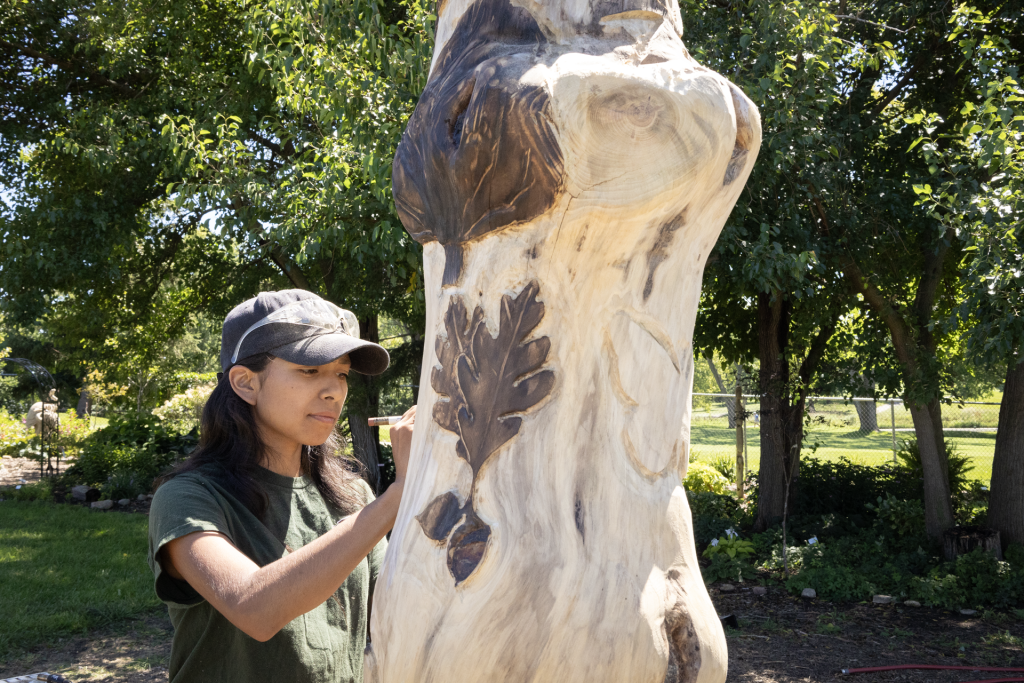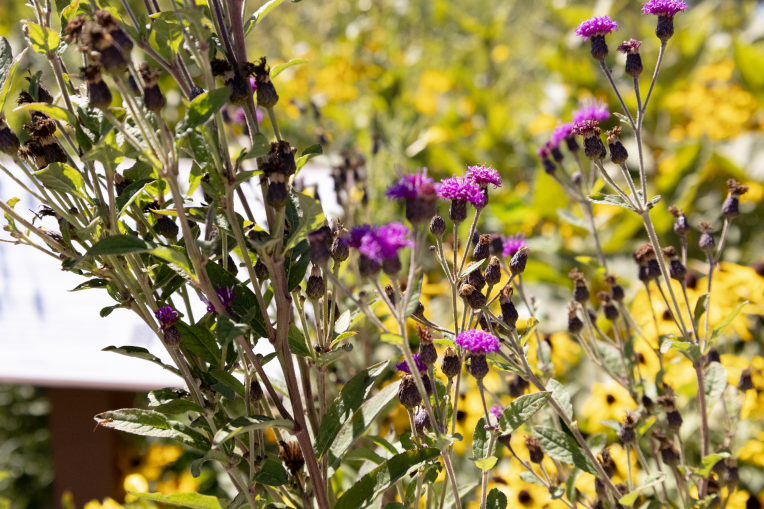Until about 200 years ago, tallgrass prairie covered 60%—21 million acres—of Illinois, including most of modern-day Bloomington-Normal.
But just a few generations after Euro-American settlers and colonists took the land from Indigenous people, 99% of Illinois’ biologically diverse landscape was developed for agriculture or urbanization.
Visitors to the 18th annual Autumnal Festival at Illinois State University’s Horticulture Center, September 9-10, will experience what it was like, before 1800, to stand amid a three-acre medley of native compass plants (rising 10 feet high), cup plants, purple menarda, goldenrod, and ironweed.

The festival’s theme “Native Roots—Honoring Our Connection to Indigenous Plants” calls on attendees to learn about the history of Illinois and the Indigenous people who cared for the land.
“The prairie was connected to people,” said Horticulture Center Director Jessica Chambers ’93. “For people who lived here prior to Europeans coming over, it was everything. It was their home, it was their pharmacy, it was where they got food.”
This year’s Autumnal Festival will include a performance by Native American flutist William Buchholtz Allison (who also played at the Horticulture Center in June for Sunset on the Longest Day: An Act of Indigenous Restoration), Native American artifact identification by Dr. Michael Wiant ’71, M.S. ’77, the interim director of the Illinois State Museum, an Indigenous cooking demonstration, a presentation on restoring bison herds to the Midwest, and a chainsaw carving demonstration with Indigenous artist Mischa Morales.
In the weeks leading up to the festival, Morales has been using a chainsaw, angle grinder, and hand tools to carve 13 native plants and 13 native animals into the trunk and branches of a dead Scotch pine tree.
“I think it’s so meaningful to get to honor a tree this way instead of just throwing it away, like most people would,” Morales said. “This gives it another life, another chance to be enjoyed.”
Morales said unveiling her art at the Autumnal Festival will be “really special.”
“To have an event like this to bring awareness to the Indigenous plants and animals that the Indigenous people took care of is very important,” Morales said. “It’s something worth learning about.”
Horticulture Center student workers Joe Tulley and Anna Benson have been preparing the Horticulture Center’s nearly two dozen gardens for the festival since early spring. Senior horticulture and landscape management major Jude Crozier has helped throughout the summer. Together they handle mowing, weeding, watering, mulching, and more. Tulley said its rewarding to watch their work blossom.
“Right now, everything is super lush and vibrant with all the different colors of both the annuals and perennials,” Tulley said. “I’m excited to take a deep breath and get to see everybody enjoying it.”

Crozier said he is appreciative of the dozens of community volunteers who have helped tend to the gardens ahead of the Horticulture Center’s showcase event. “They’re a huge reason why we can do what we do,” he said.
Benson wants Autumnal Festival attendees to take this year’s theme to heart. By experiencing what Illinois’ landscape used to look like, at the Horticulture Center, she hopes they feel emboldened and empowered to make a positive environmental impact.
“I think there’s something that everybody can do for the environment, and I think finding what’s best for them to do in their situation and how they feel best about giving back is what’s most important,” Benson said. “Finding a way to give back to nature itself is really important, and I hope people leave with that.”

The 2023 Autumnal Festival takes place Saturday, September 9, from 9 a.m.-4 p.m., and Sunday, September 10, from 11 a.m.-3 p.m. Admission is $10 for ages 13 and up, $5 for ages 3-12, and free for ages 2 and under. Tickets can be purchased online or at the event. Proceeds from the festival support the Horticulture Center’s year-round operations.
For more about Indigenous American movements that aim to rediscover identity and reclaim sovereignty through ancestral foods, consider watching the Netflix documentary Gather.

